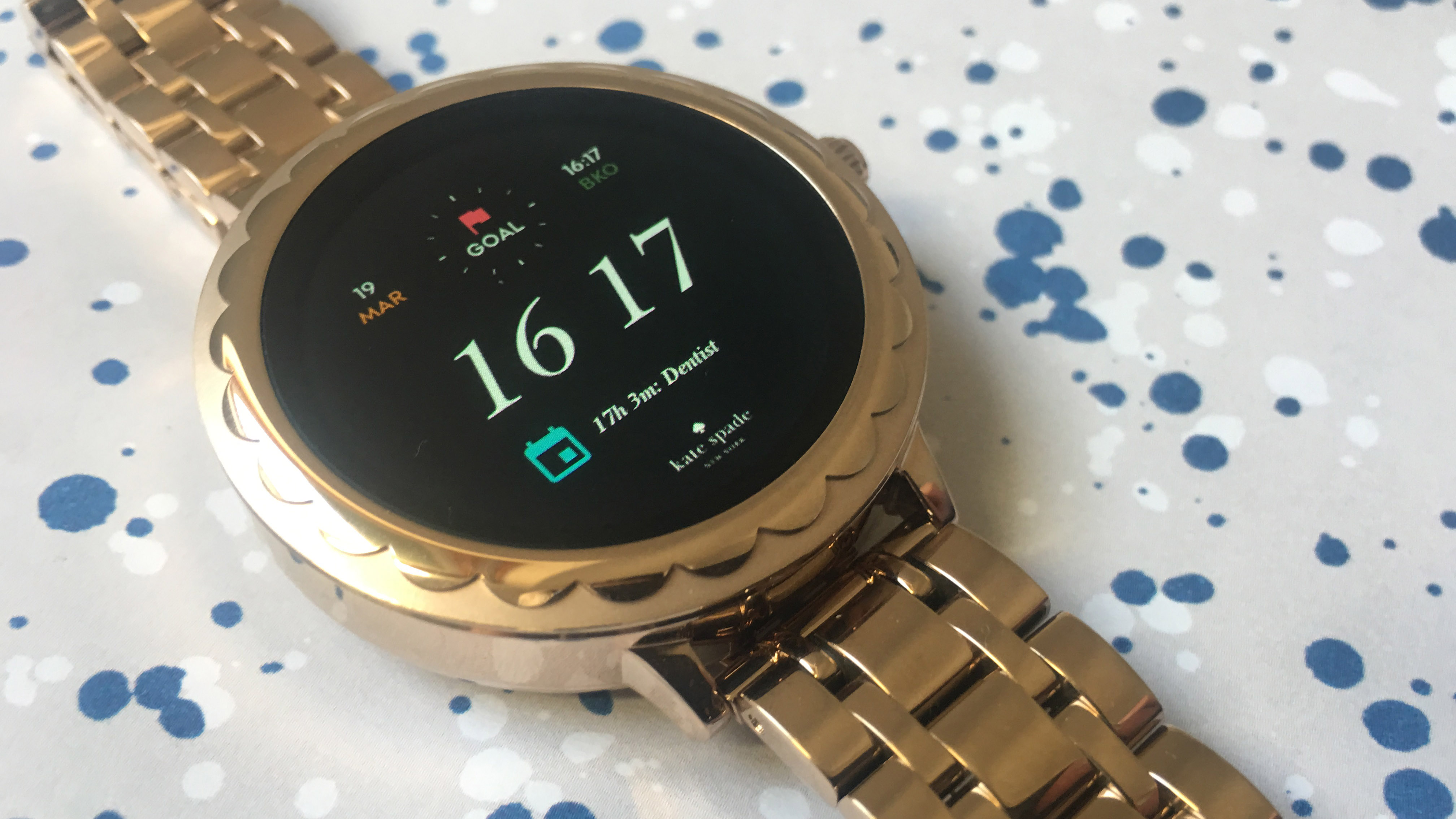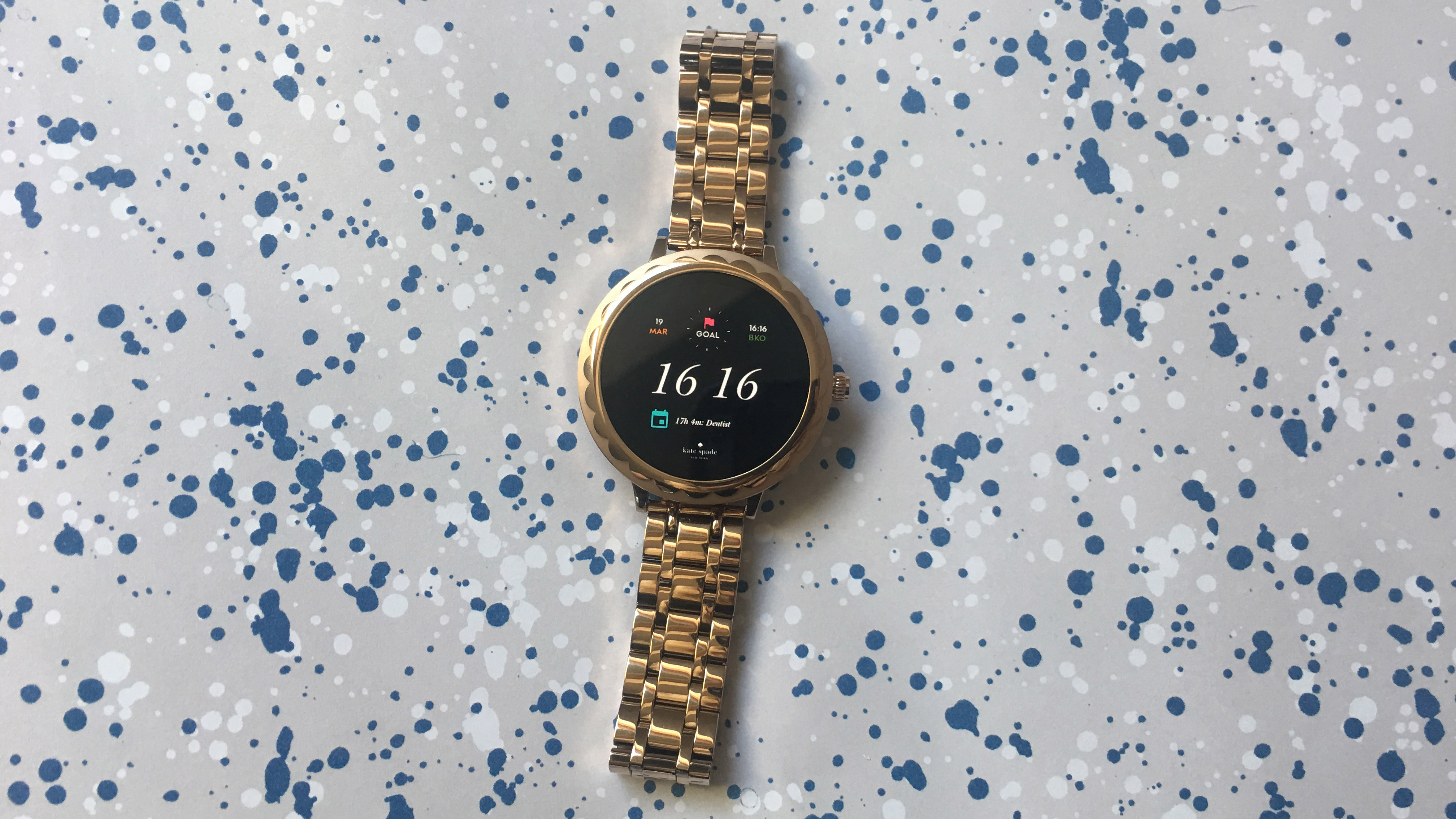Why you can trust TechRadar
Performance and fitness
- Smooth performance
- No heart rate monitor or GPS
- No NFC
The Kate Spade Scallop Touchscreen Smartwatch has enough power under-the-hood to compete with most other modern Android Wear watches, namely a Qualcomm Snapdragon Wear 2100 chipset, which keeps its performance super speedy.
Navigating around the home menu is really smooth, while delving into more tasks, like dictating a text or asking Google Assistant to do something using the wearable’s built-in microphone, also happens quickly.
But in some ways it falls short, especially if you’re into fitness. Although it has an accelerometer to track steps, there’s no built-in heart rate sensor or GPS. It’s also lacking NFC (meaning no Android Pay), as well as a speaker, which means it’ll never compete with the best of the bunch. But then in many ways, it’s not designed to.
It knows it isn’t the most tech-savvy watch on the market, it’s trying to be the best-looking and the most useful for Kate Spade fans.
Those toying with the idea of the smartwatch who do like fitness will find a few options through Google Fit, which comes pre-installed and is a comprehensive way to track activities. You’ll find support for lots of different workouts, like cycling or a squat challenge, as well as many more.
It does its best without a heart rate monitor and GPS, which might be enough for some people. But we can’t help but wish it provided a little bit more.

Battery life
- Lasts about a day on standby
- Easy to stay updated so you’re not caught out
- Charging is super simple
The Kate Spade Scallop has a big, bright and colorful display, which means one thing: it uses up battery pretty quickly.
Kate Spade and Fossil Group claim the battery life will last around 24 hours on standby and will drop to 12 to 14 hours with average use. During our testing we found these guesses to be spot on. Checking the watch now and again meant it lasted around 22 hours, while lots of checking and using it for notifications and the like dropped it down to 15 hours.
Lasting around a day on a single charge is a little disappointing yet pretty standard for the current crop of Android Wear watches. To give you a comparison, the Michael Kors Access Grayson stretches to just under two days, the Asus Zenwatch 3 is a day and a half. Away from Android Wear, the Apple Watch 3 lasted just over a day in our tests.
Of course a day’s worth of charge might not bother some people, especially those who charge their phone each night. It’s also worth mentioning there’s no sleep tracking offered by the Kate Spade Smartwatch, so it doesn’t matter if it sits on your bedside table all night.
But for others who are upgrading their wearable game and are used to using devices that require charging every few days, like the Fitbit Alta HR, daily charging could quickly become frustrating.
As most of us know, charging mechanisms are really important. The Scallop comes with a charger that’s magnetic, just plug it into a computer via USB or use a USB plug adaptor and then it’ll snap onto the back of the smartwatch.
This is nice and easy if you’re used to charging it at a desk or on a nightstand, if you’re on-the-go it’s a little more tricky and could slide off surfaces.
Current page: Performance, fitness and battery life
Prev Page Introduction, design and display Next Page Notifications, interface and appBecca is a contributor to TechRadar, a freelance journalist and author. She’s been writing about consumer tech and popular science for more than ten years, covering all kinds of topics, including why robots have eyes and whether we’ll experience the overview effect one day. She’s particularly interested in VR/AR, wearables, digital health, space tech and chatting to experts and academics about the future. She’s contributed to TechRadar, T3, Wired, New Scientist, The Guardian, Inverse and many more. Her first book, Screen Time, came out in January 2021 with Bonnier Books. She loves science-fiction, brutalist architecture, and spending too much time floating through space in virtual reality.

